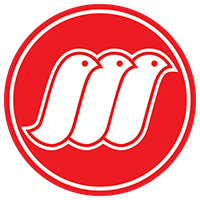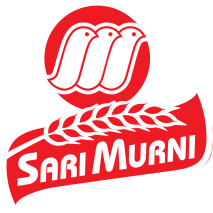
Pinch by pinch: Inspired by the Dutch’s fluffy dessert poffertjes, 'kue cubit' (pinch cake) are mini round cakes sold by street vendors near schools or traditional markets. (Kompas/Shutterstock/Ariyani Tedjo)
There is something special about hearing the school recess bell ring and rushing to the cafeteria or the parking lot of the school complex to grab your favorite snacks. They may not be the most nutritious, but in our memory, they were the most delicious. Here are 20 popular Indonesian childhood snacks worth checking out — some of them are still widely available if you feel like going down memory lane.
1. Kue cubit
Inspired by the Dutch fluffy dessert poffertjes (pancakes), kue cubit (pinch cakes) are round miniature cakes sold by street vendors near schools or traditional markets. The name refers to the seller needing to use chopstick-like utensils to “pinch” the cake off the steel plate where it is cooked. Traditionally, it comes plain or with Meises chocolate sprinkles on top, but over the years more variations such as green tea, durian or oreo kue cubit have arisen. For those feeling adventurous, go for a variant called “laba-laba” (spider), referring to a spider web-shaped kue cubit created by spreading liquid dough around the entire steel plate.
2. Lidi
Who would have thought that frying flour into lidi (stick) shapes (usually similar to angel hair or spaghetti pasta) and dousing it in MSG, salt and chili seasoning would make it one of the most addictive eating experiences? Spicy and savory, it is hard to stop munching on these fun-shaped snacks. Nowadays, lidi can still be found in some school cafeterias or you can simply order them on e-commerce platforms.
3. Makaroni pedas
A stepbrother of lidi, makaroni pedas (spicy macaroni) offers the same spicy and savory sensation, but in the form of crispy fried macaroni, which makes it more appealing to adults. This snack is so popular that there has been a resurgence recently with local franchise outlets such as Makaroni Ngehe specializing in selling these bad boys.
4. Rambut nenek
Strangely but appropriately-named rambut nenek (grandmother’s hair), the snack is basically sugar spun to form a rough hair-like texture, sandwiched between two pieces of pink flat wafer, a perfect snack for children or sweet-toothed adults. Rambut nenek is still popular and is widely available everywhere from traditional markets to supermarkets.
5. Anak Mas
Possibly the quintessential 90s childhood snack, since every Asian country seems to have their own version of it. These uncooked dried ramen blocks are covered in MSG (chicken or cheese powder, take your pick) and are meant to be eaten like deep-fried potato chips. It is fun to eat because of the exaggerated crunch and the fact that it is mandatory for consumers to crush the noodle blocks to bits prior to devouring it.
6. Jagoan Neon
These lolly candies come in different fruit flavors and change the color of your tongue as you eat. Some are sweet, others are sour. Back in the day, Jagoan Neon (Neon Heros) also came with cute temporary tattoos that children could stick on themselves. What is not to like?
7. Chiki
Basically a take on cheese balls or cheese puffs, Chiki balls or just “chiki” became one of the more well-known mass-produced Indonesian snack brands, arguably beating other big names such as Chitato or Taro. The name became synonymous with any type of puff snack and many people started calling anything remotely similar “chiki”. Even though the cheese flavor remains a staple, there were other variants that were quite out there as far as puffs go in the 90s: chicken stock, chocolate and even meatball flavor.
8. Telur gulung
Telur gulung is a skewered omelet served in a plastic cup, often topped with mayonnaise, tomato sauce or chili sauce. Starting out as a night market and school snack, due to its popularity, this simple treat ended up being adopted by many restaurants and modern vendors, each of whom added their own twist to the dish, with ingredients such as sausages, chicken nuggets and even instant noodles. 9. Leker Indonesia’s answer to crepes, leker makes a perfect dessert snack due its thin and crispy texture and delightful fillings of banana, cheese, condensed milk and chocolate sprinkles. Many sources claimed leker originated in Surakarta, Central Java, and Surabaya, East Java, where many Dutch resided during the colonial era and would often blurt out “lekker” (“delicious” in Dutch) after eating the snack. It is not hard to understand why.

Varities: Originated in Jakarta, 'kue ape' now comes in many different color variations and toppings (cheese or chocolate sprinkles). (JP/JP)
12. Kue ape
Varities: Originated in Jakarta, ‘kue ape’ now comes in many different color variations and toppings (cheese or chocolate sprinkles). (JP/JP) (JP/JP) Originating in Jakarta, kue ape — or colloquially, often referred to as kue tetek (breast cake) due to its shape — is a traditional pancake with a soft center and thin, crispy, crepe-like edges. Often found around school areas, now it comes in many different color variations and with various toppings such as cheese or chocolate sprinkles.
13. Permen karet Yosan
Since 1986, permen karet Yosan (of Yosan bubblegum) has long been a staple when it comes to chewing gum among Indonesian youth, thanks to its colorful packaging and affordability. It is so ubiquitous that at one point, warungs (roadside stalls) even used the gum as small change for paying customers.




